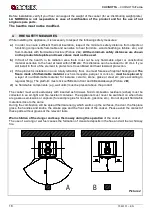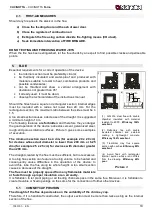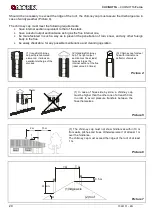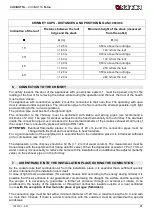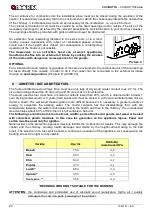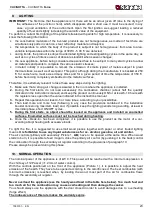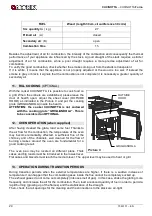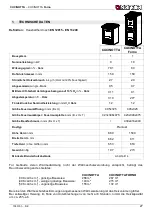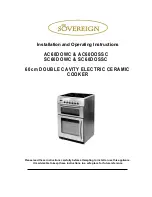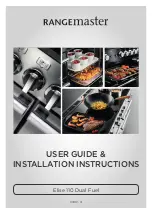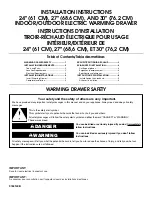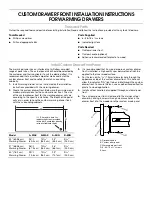
CUCINOTTA
– CUCINOTTA
Forno
7093101 – EN
23
9. LIGHTING
IMPORTANT
:
The first time that the appliance is lit, there will be an odour given off (due to the drying of
the adhesives of the junction chord), which disappears after a short use. It must be ensured, in any
case, a good ventilation of the environment. Upon the first ignition we suggest loading a reduced
quantity of fuel and slightly increasing the calorific value of the equipment.
To perform a correct first lighting of the products treated with paints for high temperature, it is necessary to
know the following information:
•
the construction materials of the involved products are not homogeneous, as matter of fact there are
simultaneously parts in cast iron, steel, refractory material and majolica;
•
the temperature to which the body of the product is subject is not homogeneous: from area to area,
variable temperatures within the range of 300°C - 5 00 °C are detected;
•
during its life, the product is subject to alternated lighting and extinguishing cycles in the same day, as
well as to cycles of intense use or of absolute standstill when season changes;
•
the new appliance, before being considered seasoned has to be subject to many start cycles to allow
all materials and paints to complete the various elastic stresses;
•
in detail, initially it is possible to remark the emission of smells typical of metals subject to great
thermal stress, as well as of wet paint. This paint, although during the manufacture it is backed at 250
°C for some hours, must exceed many times and for a given period of time the temperature of 350 °C
before becoming completely embedded in the metallic surfaces.
Therefore, it is extremely relevant to take these easy steps during the lighting:
1.
Make sure that a strong air change is assured in the room where the appliance is installed.
2.
During the first starts, do not load excessively the combustion chamber (about half the quantity
indicated in the instructions manual) and keep the product continuously ON for at least 6-10 hours with
the registers less open than the value indicated in the instructions manual.
3.
Repeat this operation for at least 4-5 or more times, according to your possibilities.
4.
Then load more and more fuel (following in any case the provisions contained in the installation
booklet concerning maximum load) and, if possible, keep the lighting periods long avoiding, at least in
this initial phase, short ON/OFF cycles.
5. During the first starts, no object should be leaned on the appliance and in detail on enamelled
surfaces. Enamelled surfaces must not be touched during heating.
6.
Once the «break-in» has been completed, it is possible to use the product as the motor of a car,
avoiding abrupt heating with excessive loads.
To light the fire, it is suggested to use small wood pieces together with paper or other traded lighting
means.
It is forbidden to use any liquid substance as for ex. alcohol, gasoline, oil and similar.
The air controls (primary and secondary Picture 1,
A
,
B
) have to be opened at the same time. When wood
starts to burn, it is possible to feed it again, close the primary air control (by pushing it to the back) control
the combustion through the secondary air register according to the provisions of paragraph 10.
Please always be present during this phase.
10. NORMAL OPERATION
The nominal power of the appliance is of kW 9. This power will be reached with a minimum depression in
the chimney of 12 Pascal (=1.2 mm of water column).
With the controls positioned on the front of the appliance (Picture 1), it is possible to adjust the heat
emission of the hearth. They have to be opened according to the calorific need. The best combustion (with
minimum emissions) is reached when, by loading the wood, most part of the air for combustion flows
through the secondary air register.
Never overload the appliance (see the hourly wood load in the table here below). Too much fuel and
too much air for the combustion may cause overheating and then damage the cooker.
You should always use the appliance with the door closed in order to avoid damages due to overheating
(forge effect).
The inobservance of this rule makes the warranty expire.










